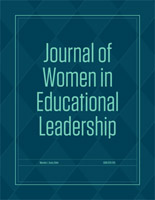Department of Educational Administration

Journal of Women in Educational Leadership
Date of this Version
10-2007
Document Type
Article
Citation
Journal of Women in Educational Leadership, Vol 5, No. 4-October 2007 ISSN: 1541-6224
Abstract
The opportunity to read a number of manuscripts written by a variety of authors is a great experience. However, one does tend to collect a number of examples of writing faux pas that are inelegant. For instance, the burgeoning number of education acronyms may pose a barrier to reading and understanding. Acronyms should be used sparingly and, if used, should be written out completely and followed by the abbreviation on first use. The catch phrase, "this is part of a larger study" is a chilling writing convention. I am either left "wanting more" of the study or wondering if that tantalizing tease is designed to make me think more highly of the manuscript I have in hand. The manuscript that has not been proof read causes me to question the ability of the writer. Am I to assume the writer presumes the work to be of such high quality that the meaning will shine through a plethora of grammatical errors and sloppy construction? The use of "et al" is frequent but often not used in accordance with style manual guidelines. This is a tiresome oversight on the part of authors. Figures and tables are swell. I often wonder why authors do not include them with the manuscript even though they are cited in the text. References cited in the text but not included in the reference list and references included in the reference list but not cited in the text are a conundrum. Think of the delay in the publication cycle as these small, noxious details are addressed.


Comments
Copyright © 2007 Pro>Active Publications. Used by permission.